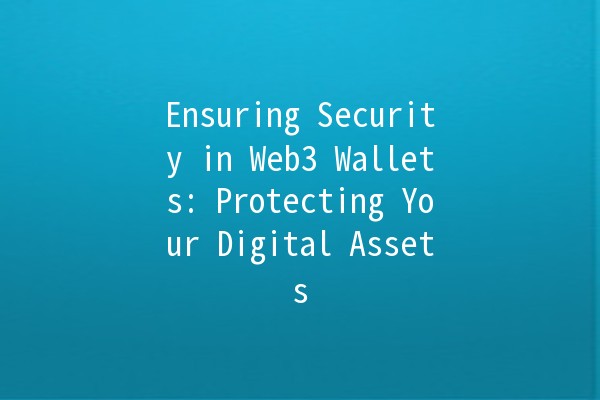




Web3 wallets are an essential component of the decentralized web, enabling users to interact with blockchain applications, manage digital assets like cryptocurrencies, and participate in decentralized finance (DeFi) platforms. Unlike traditional wallets that only hold physical money, Web3 wallets store cryptographic keys necessary for accessing blockchain networks. This revolutionary shift brings numerous benefits, but it also raises security concerns. Below, we delve into practical tips for enhancing the security of Web3 wallets.

Not all wallets are created equal; they come in different types with varying security features. Understanding these differences can significantly influence the safety of your funds.
Hot Wallets: These are connected to the internet and are easier to access. Suitable for everyday transactions but can be hacked.
Cold Wallets: These are offline wallets, such as hardware wallets and paper wallets, offering enhanced security. Ideal for longterm storage of digital assets.
If you plan to hold significant amounts of cryptocurrency or NFTs, consider investing in a reputable cold wallet. For daily transactions, a hot wallet can suffice, but ensure you follow additional security measures.
TwoFactor Authentication is an extra layer of security that requires not only a password and username but also something that only the user has on them—a piece of information that can help confirm their identity.
When accessing your wallet, after entering your password, a timesensitive code will be required to complete the login. This means that even if someone gets your password, they cannot access your wallet without your phone.
Keeping your wallet software updated ensures that you have the latest security patches and features. Developers frequently identify vulnerabilities and release updates to fix them.
Enable Automatic Updates: If possible, enable automatic updates to avoid missing important security patches.
Follow Official Channels: Keep an eye on announcements from your wallet provider regarding updates and security advisories.
Set a reminder to check for software updates every month, and if you notice any updates, install them immediately to benefit from enhanced security protocols.
A strong password acts as the first line of defense against unauthorized access. Weak or reused passwords simplify the task for potential thieves.
Length and Complexity: Use at least 12 characters, including uppercase, lowercase, numbers, and symbols.
Avoid Personal Information: Steer clear of easily accessible information (like your birthdate or pet's name).
Utilize a password manager to generate and store complex passwords securely. This adds a layer of protection and ensures you don't forget your passwords.
Phishing attacks involve fraudulent attempts to obtain sensitive information by disguising as trustworthy entities in electronic communications. As a Web3 user, you may encounter phishing attempts via emails, websites, or social media.
Verify URLs: Always check the URL before entering your credentials to avoid fake sites.
Look for Red Flags: Be cautious of unsolicited emails or messages, especially those prompting urgency.
If you receive an email claiming to be from your wallet provider, doublecheck the sender's email address and login directly to your wallet's official website rather than clicking on any link in the email.
A Web3 wallet is a digital wallet that allows users to store, manage, and interact with blockchain assets. Unlike traditional wallets, Web3 wallets use private keys to access your cryptocurrencies and decentralized applications (dApps).
Web3 wallets can be secure if managed correctly, by implementing strong passwords, 2FA, using reputable wallet services, and keeping software updated.
The recovery process varies depending on the wallet type. Most wallets provide recovery phrases during setup. If you lose your wallet, immediately contact customer support for assistance.
Stay informed about the latest scams, use trusted wallets and exchanges, and always verify communications from wallet providers.
Web3 wallets can store cryptocurrencies, nonfungible tokens (NFTs), and other digital assets associated with blockchain networks.
Regular monitoring of your wallet is recommended, especially after significant transactions or if you notice unusual activity in your accounts.
Participating in Web3 forums, Reddit groups, and other online communities can provide further insights into safeguarding your assets. Engaging with fellow users enhances your understanding and helps keep abreast of the latest security trends.
, securing your Web3 wallet is crucial in protecting your digital assets. By implementing these practical tips—selecting the right wallet type, enabling 2FA, updating your software, using strong passwords, and being wary of phishing—you can significantly enhance your security posture. Stay vigilant, informed, and proactive in protecting your digital investments.